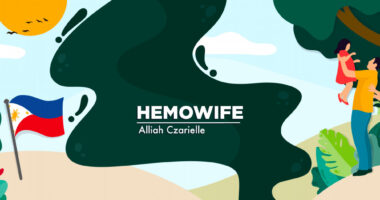Understanding the nuances of hemophilia bleeding
The size of a bleed doesn't necessarily determine its impact or severity

After a decade of living alongside my husband, Jared, and his severe hemophilia B, I’ve learned that not all bleeding is as straightforward as it may seem.
Bleeds vary widely, not just in size but in severity and impact. What might look minor can be excruciating, while larger bleeds, depending on where they occur, may be manageable. Over time, I’ve come to understand that factors such as location and mobility make all the difference in determining a bleed’s pain and disruption.
Nearly all hemophiliacs dread the infamous iliopsoas bleed. This deep, pelvic-area bleed can immobilize someone for days or even weeks, as it affects a large muscle group. During past episodes, Jared was completely bedridden, as even small shifts caused searing pain. Iliopsoas bleeds aren’t just painful; they disrupt daily life in ways that smaller joint bleeds don’t. This muscle takes time to heal, and the bleed’s impact on mobility can bring lasting consequences.
Recently, Jared experienced a painful bleed in his toe. Despite the toe’s small size, its weight-bearing role made every step agonizing, as it couldn’t be easily rested. Larger bleeds, like those in his arm, may appear severe, but can be less painful when they don’t interfere with daily activities. The key to Jared’s pain often lies in whether the area moves, bears weight, or undergoes frequent pressure — factors that aren’t obvious at first glance.
Some small bleeds, such as those in the hands, can disrupt daily life in relatively unique ways. A hand bleed may cause only moderate pain, but it’s psychologically frustrating, especially for someone like Jared who keeps his hands busy preparing food or typing. Limited hand mobility makes these everyday tasks annoying and uncomfortable, bringing a different kind of disruption to his routine.
Adjusting factor usage
One surprising aspect of hemophilia is how factor usage doesn’t always match a bleed’s appearance or pain level. For example, Jared’s toe bleed, though small, required more factor than one might expect because of its risk of rebleeding from constant use. In contrast, larger bleeds in less active areas may need less factor, as rest is easier and reinjury less likely. This nuanced approach means Jared is constantly adjusting his activities and staying vigilant, even with minor injuries, to prevent aggravation or complications.
This vigilance comes with a mental cost. Jared is always mindful of his movements, fearing that even a small injury could spiral into a painful ordeal. Watching him handle this unpredictability has taught me that living with hemophilia means constantly adapting, respecting, and anticipating his body’s reactions in ways most people rarely consider.
For Jared, managing hemophilia involves more than treating visible injuries. Each bleed has its own challenges, and he must adapt to each situation, even if the injury looks minor to others. These experiences have taught me to be patient and empathetic, recognizing that Jared’s pain is real, even when it doesn’t appear dramatic.
Understanding these nuances is key to supporting those with hemophilia. When we see beyond the surface, we can cultivate empathy and support for the physical and emotional complexities of life with the condition.
Note: Hemophilia News Today is strictly a news and information website about the disease. It does not provide medical advice, diagnosis, or treatment. This content is not intended to be a substitute for professional medical advice, diagnosis, or treatment. Always seek the advice of your physician or another qualified health provider with any questions you may have regarding a medical condition. Never disregard professional medical advice or delay in seeking it because of something you have read on this website. The opinions expressed in this column are not those of Hemophilia News Today or its parent company, Bionews, and are intended to spark discussion about issues pertaining to hemophilia.








Paul
My name is Paul Weimer. I have hemophilia a severe and I saw your comments and your paragraph on Jared‘s condition. I need to get involved in something and talk about my hemophilia condition.